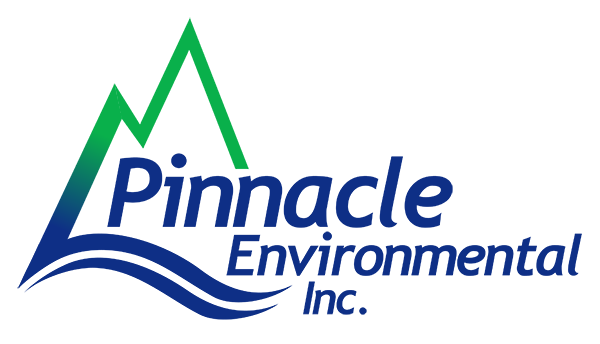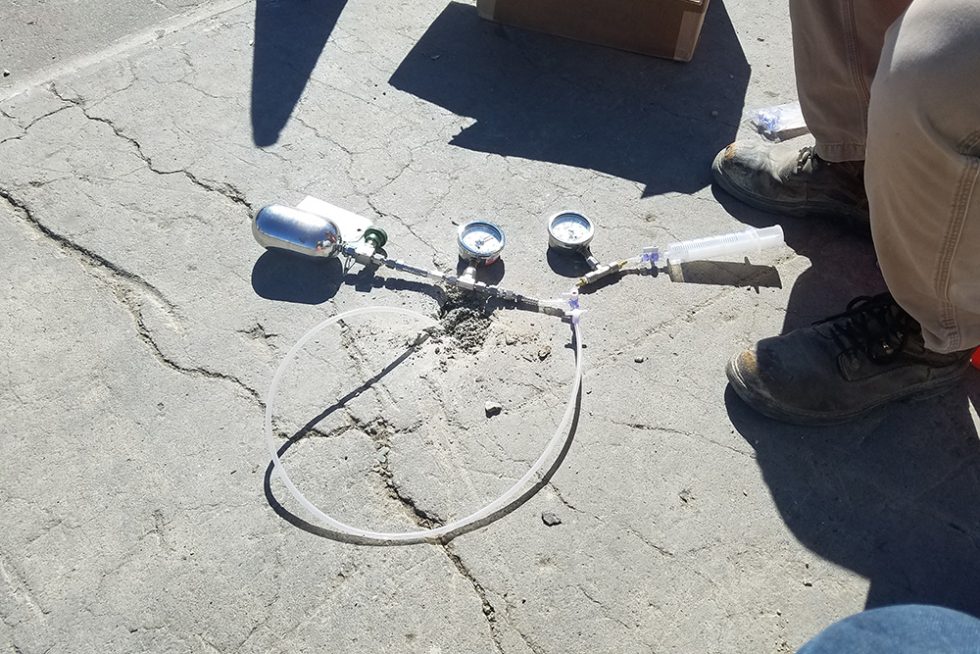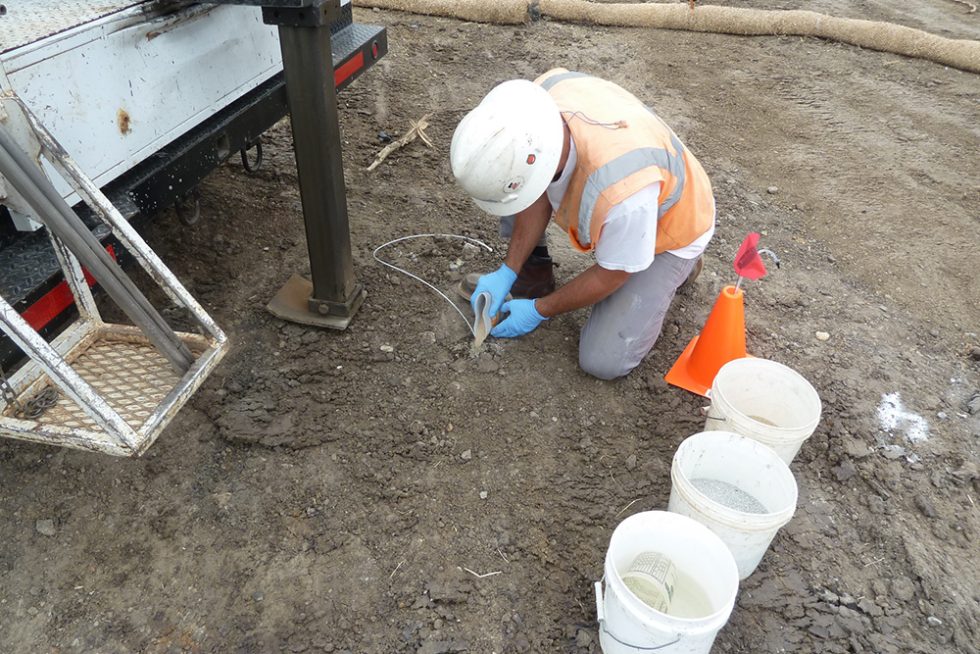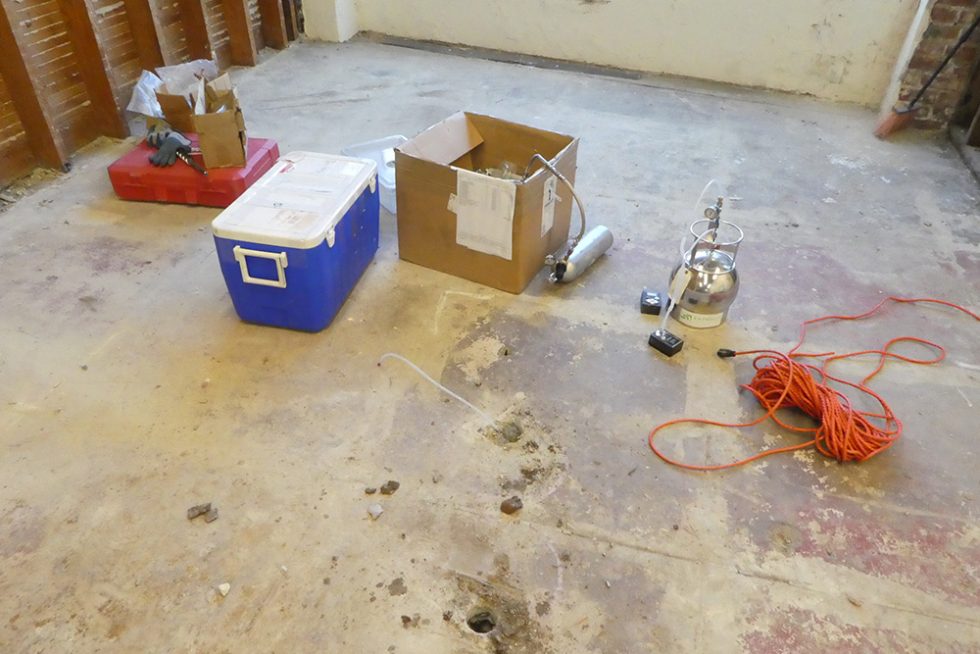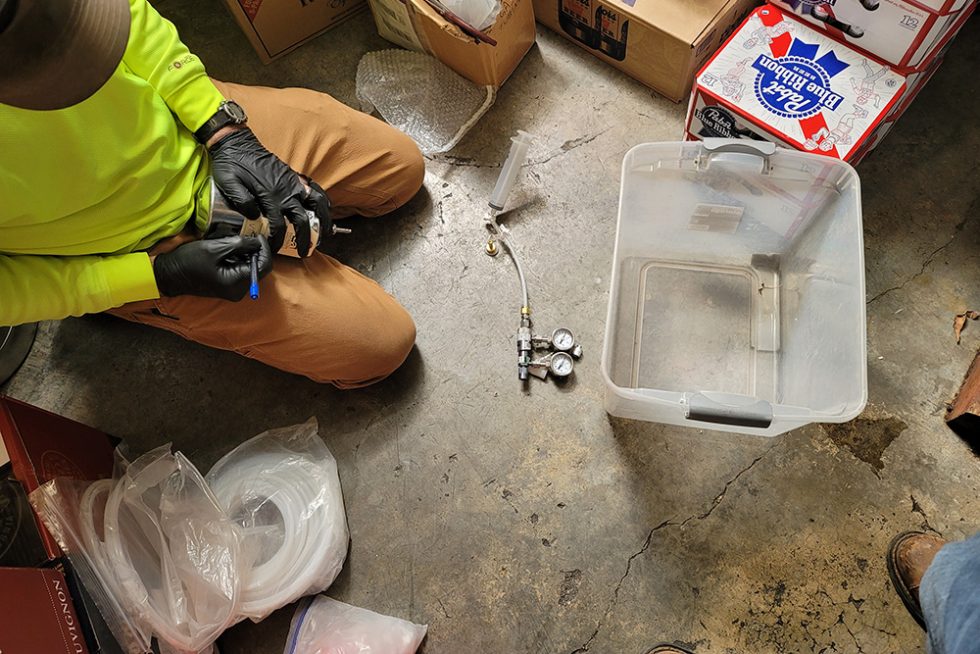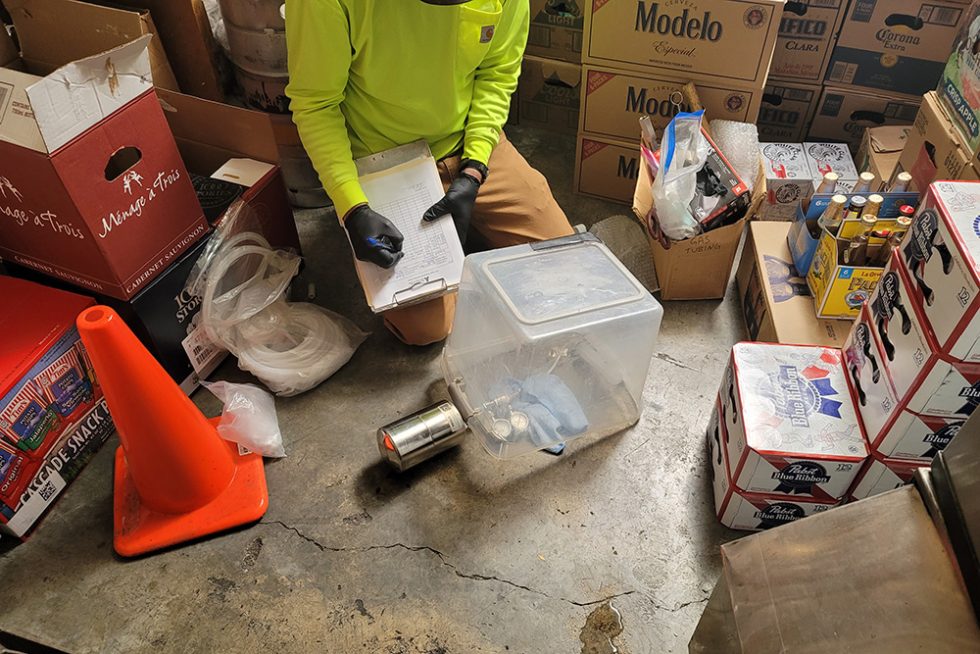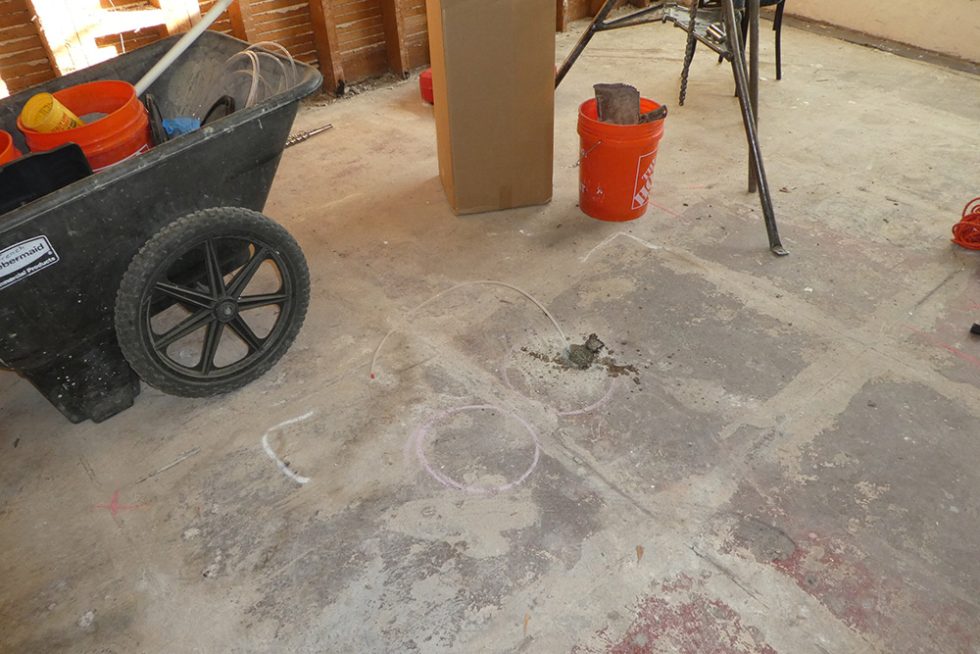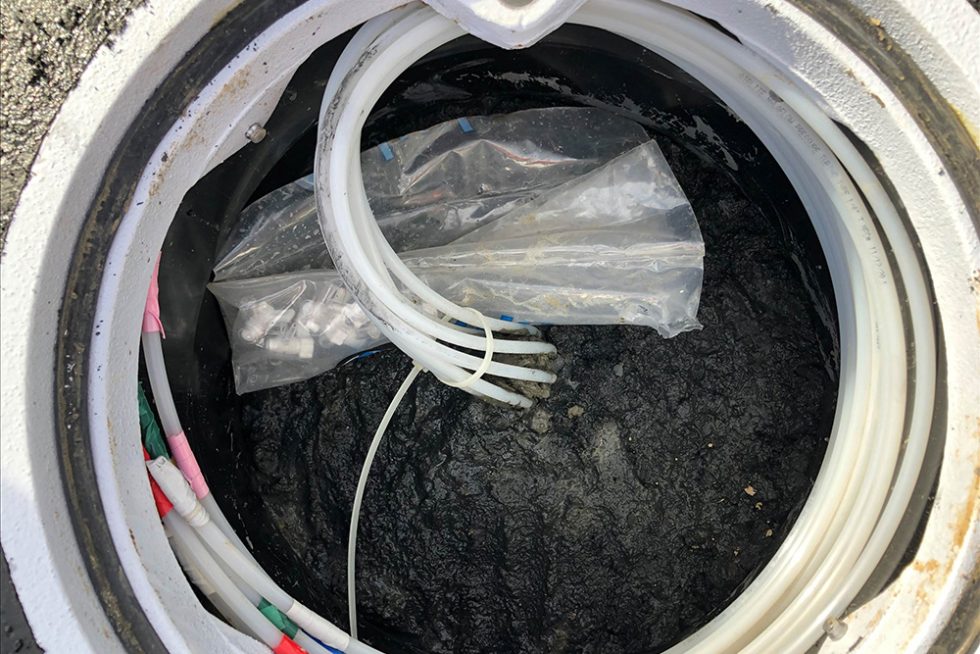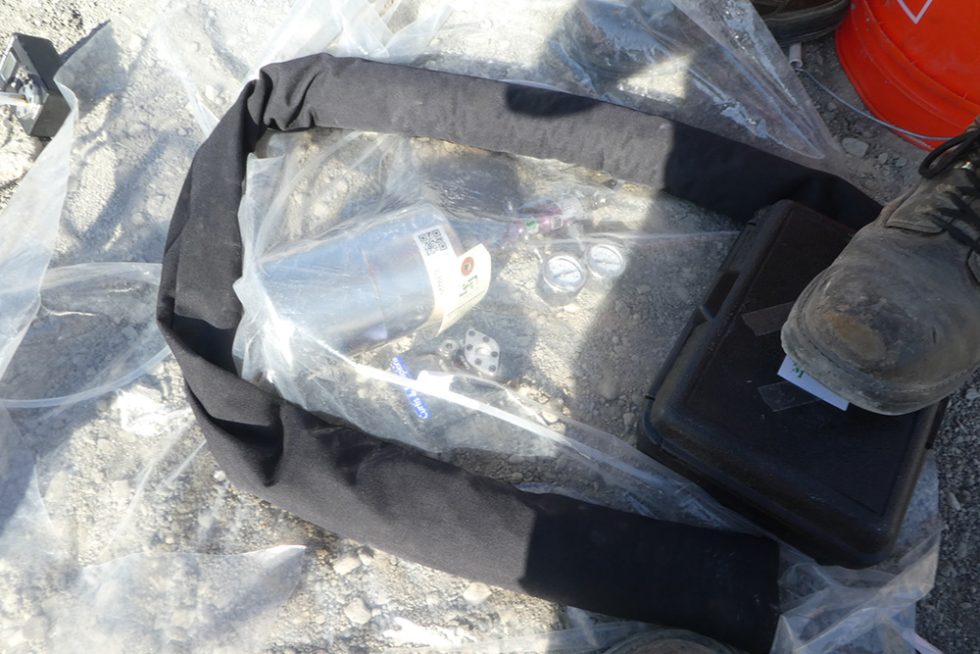Soil Vapor Migration Pathway Evaluation
Soil Vapor Migration Pathway Evaluation
Vapor intrusion of hazardous chemicals of concern (CoCs) into interior air is a significant human health and regulatory concern. Soil vapor migration pathway evaluation is a process used to assess the movement of vapors through the soil and its potential impact on human health and the environment. It is an important aspect of the assessment and remediation of sites impacted by on- or off-site contamination.
How do vapors move through the subsurface?
When hazardous substances are released into the soil, they can volatilize and form vapors. These vapors can exist as a cloud between the soil particles. In this form, they move with the path of least resistance and can impact both indoor air in structures as well as other media (e.g., groundwater). This migration can occur via cracks in building foundations, utility conduits, or porous materials. If these vapors reach occupied spaces, they can pose risks to human health through inhalation exposure. The following are some examples of vapor transport pathways:
-
- Soil Porosity: Vapors can migrate through the spaces between soil particles due to the presence of pore spaces. This migration occurs when volatile compounds, such as gasoline or solvents, permeate through the soil matrix and move with the air present in the pores. The movement of vapors through the soil depends on factors like soil type, moisture content, and pressure differentials.
- Fractures and Fissures: Vapors can migrate through fractures, cracks, or fissures in the subsurface. These pathways can be natural, such as joints in bedrock or fractures in clay formations, or human-made, like boreholes or utility conduits. Vapors can travel along these preferential pathways, bypassing the bulk soil matrix and potentially reaching the surface or entering buildings.
- Sewer and Utility Lines: Underground sewer and utility lines, such as sewer pipes, electrical conduits, or water pipes, can serve as conduits for vapor migration. Vapors can enter these lines through leaks or gaps and spread through the network, potentially reaching structures connected to the lines. This pathway is particularly relevant when the lines pass through contaminated areas.
- Capillary Action: Capillary action can contribute to vapor migration in soils. It occurs when vapors are drawn upward through small spaces in the soil due to surface tension and adhesion forces. Capillary action is especially significant in fine-grained soils like silts and clays, where the small pore size facilitates the movement of vapors against gravity.
It’s important to note that the actual migration pathways and their significance depend on site-specific factors, such as the nature of the contaminants, subsurface conditions, hydrogeology, and the presence of infrastructure.
Where are Soil Vapor Migration Pathway Evaluations used?
Soil vapor migration pathway evaluation can be applied to various scenarios to identify potential vapor intrusion pathways, assess risks, and implement appropriate mitigation measures to protect human health and the environment. The following are some examples:
-
- Contaminated Sites: In order to address potential Vapor Intrusion Concerns, a soil vapor migration pathway evaluation is key to assessing potential human health risks resulting from on- or off-site contamination. The evaluation may involve subsurface, sub-slab, or indoor air sampling and analysis and may include assessment of building and utility construction design for potential vapor intrusion pathways.
- Residential Site Assessment: In a residential area where a former industrial facility is located nearby, a soil vapor migration pathway evaluation may be conducted to determine if contaminants from the industrial site are migrating through the soil and potentially entering the homes in the vicinity. The evaluation may involve sampling indoor air and soil gas, assessing building construction features, and conducting risk assessments to identify potential vapor intrusion pathways and associated risks.
- Brownfield Development: When redeveloping a brownfield site (a previously contaminated site), a soil vapor migration pathway evaluation is crucial to assess the potential for vapor intrusion into newly constructed buildings or structures. The evaluation would involve characterizing the extent and nature of the contamination, conducting vapor intrusion assessments, and recommending mitigation measures to ensure the safety of future occupants.
- Underground Storage Tank Removal: During the removal of underground storage tanks (USTs) at a gasoline station, a soil vapor migration pathway evaluation may be conducted to assess the potential for vapor intrusion into nearby buildings. The evaluation would involve monitoring soil gas concentrations, evaluating utility installations and foundation types, and implementing measures to mitigate potential vapor intrusion risks.
- Industrial Facility Assessment: In an industrial facility where hazardous substances are handled or stored, a soil vapor migration pathway evaluation is essential to evaluate the potential for vapors to migrate from the site and impact neighboring areas. The evaluation would involve assessing soil and groundwater contamination, conducting vapor intrusion assessments in nearby buildings, and implementing appropriate remedial measures to prevent or mitigate vapor intrusion risks.
